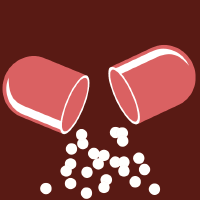Topic Menu
► Topic MenuTopic Editors




2. Centre of Biological Engineering (CEB), Laboratory of Research in Biofilms Rosário Oliveira (LIBRO), Campus de Gualtar, University of Minho, 4710-057 Braga, Portugal
3. LABBELS–Associate Laboratory, Braga/Guimarães, Portugal
Novel Antimicrobial Agents: Discovery, Design and New Therapeutic Strategies
Topic Information
Dear Colleagues,
The increase in antibiotic resistance raises concerns that, at least in some regions (especially developing countries), we are returning to a pre-antibiotic era, in particular for Gram-negative infections. The CV-19 outbreak exemplifies that resistance originating from some parts of the world has global effects, hence we need to act now to eradicate antimicrobial resistance worldwide. There are few novel anti-Gram-negative/positive drugs entering clinical trials, therefore, novel drugs, but also development of novel techniques and methods that lead to new drugs, are needed. Overcoming resistance to restore the activity of existing drugs and repurposing with an excellent safety record are also important topics. This Special Issue is seeking original research articles and synopses (reviews) that make substantial advances within this field and we are inviting researchers from different fields (chemistry, biology, biochemistry, medicinal chemistry, PK PD modellers) to contribute to this editorial project. We aim to cover not only traditional but also non-traditional products, with both broad range and single target antibiotics both for human and animal use.
Dr. Daniele Castagnolo
Dr. Jürgen Brem
Prof. Dr. Mark G. Moloney
Dr. Sónia Silva
Topic Editors
Keywords
- antibiotic resistance
- antimicrobial agents
- novel anti-Gram-negative drugs
- novel anti-Gram-positive drugs
- antibiotics use
Participating Journals
| Journal Name | Impact Factor | CiteScore | Launched Year | First Decision (median) | APC |
|---|---|---|---|---|---|

Antibiotics
|
4.6 | 8.7 | 2012 | 15 Days | CHF 2900 |

Chemistry
|
2.4 | 3.9 | 2019 | 18.5 Days | CHF 1800 |

Molecules
|
4.6 | 8.6 | 1996 | 16.1 Days | CHF 2700 |

Preprints.org is a multidisciplinary platform offering a preprint service designed to facilitate the early sharing of your research. It supports and empowers your research journey from the very beginning.
MDPI Topics is collaborating with Preprints.org and has established a direct connection between MDPI journals and the platform. Authors are encouraged to take advantage of this opportunity by posting their preprints at Preprints.org prior to publication:
- Share your research immediately: disseminate your ideas prior to publication and establish priority for your work.
- Safeguard your intellectual contribution: Protect your ideas with a time-stamped preprint that serves as proof of your research timeline.
- Boost visibility and impact: Increase the reach and influence of your research by making it accessible to a global audience.
- Gain early feedback: Receive valuable input and insights from peers before submitting to a journal.
- Ensure broad indexing: Web of Science (Preprint Citation Index), Google Scholar, Crossref, SHARE, PrePubMed, Scilit and Europe PMC.

